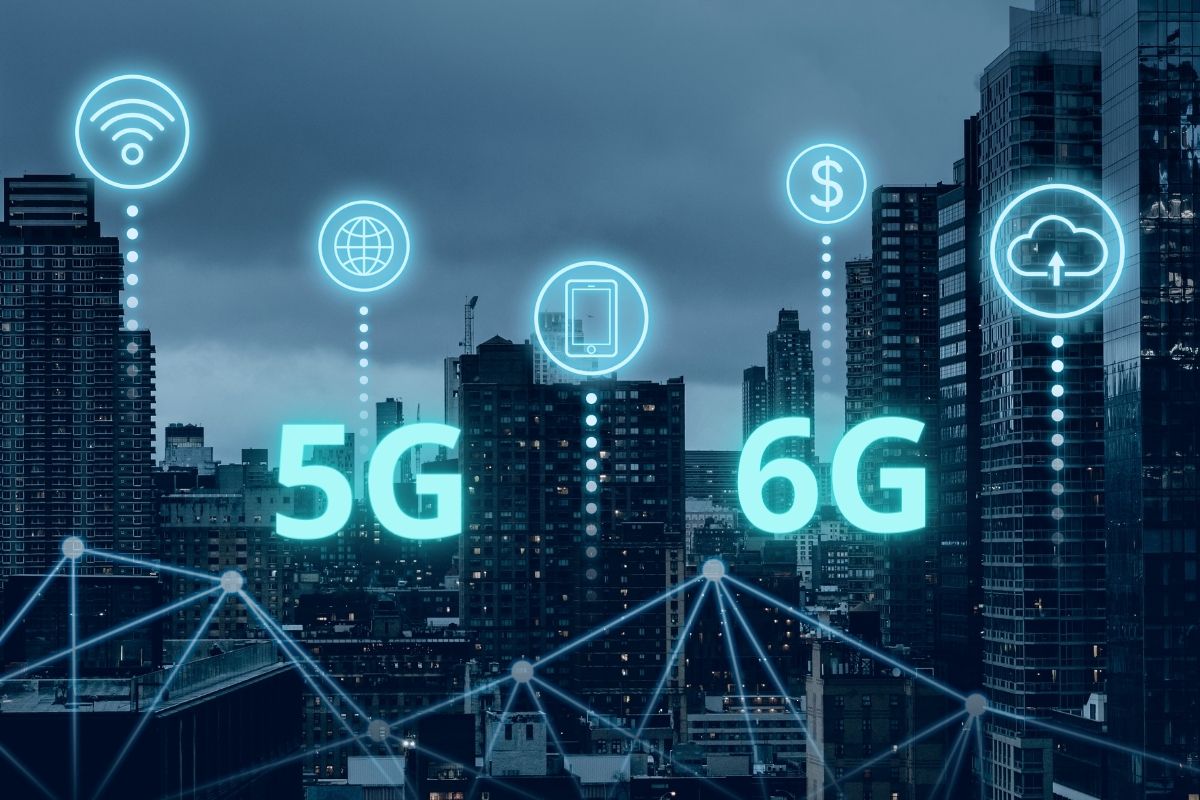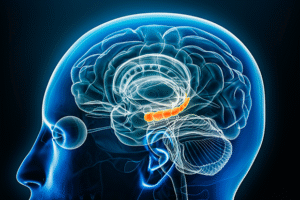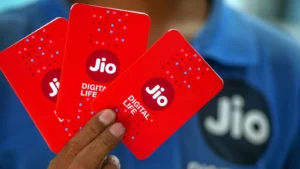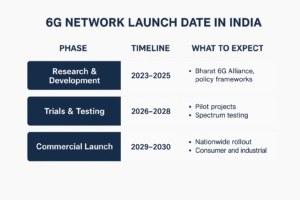📡 5G vs 6G Technology: Everything You Need to Know
Technology never stands still. Just as the world is still adopting 5G, researchers and telecom giants are already working on 6G, the next generation of mobile connectivity. But what exactly is the difference between 5G and 6G? Will 6G simply be “faster,” or will it completely transform our digital world?
- 🔹 What is 5G?
- 🔹 What is 6G?
- 🔄 5G vs 6G: Side-by-Side Comparison
- 🌍 Real-World Applications
- ⚡ Advantages of 5G and 6G
- 🚧 Challenges Ahead
- 🔮 The Future: Will 6G Replace 5G?
- ✅ Final Thoughts
This article breaks down 5G vs 6G technology, exploring their features, applications, advantages, challenges, and future potential.
🔹 What is 5G?
5G stands for fifth-generation mobile network, launched commercially around 2019–2020. It was designed to improve on 4G LTE by offering:
- Faster speeds (up to 10 Gbps)
- Lower latency (1 millisecond or less)
- Greater device connectivity (IoT devices, smart homes, autonomous vehicles)
Applications of 5G:
- High-definition video streaming
- AR/VR gaming
- Smart cities
- Remote healthcare (telemedicine, robotic surgery)
- Autonomous cars and drones
In short: 5G is about speed, reliability, and connectivity—enabling a fully digital lifestyle.
🔹 What is 6G?
6G is the sixth-generation mobile network, expected to roll out around 2030. It’s still in research and development but promises to go beyond 5G by merging the digital, physical, and biological worlds.
Key Features of 6G:
- Speeds up to 1 Tbps (100× faster than 5G)
- Ultra-low latency (microseconds instead of milliseconds)
- AI-driven networks that manage themselves
- Holographic communication (real-time 3D video calls)
- Integration with brain-computer interfaces
- Satellite-based global coverage
In short: 6G is about intelligence, immersion, and ubiquity—creating a truly connected world.
🔄 5G vs 6G: Side-by-Side Comparison
| Feature | 5G (Fifth Generation) 🚀 | 6G (Sixth Generation) 🌌 |
|---|---|---|
| Launch Timeline | 2019–2020 | Around 2030 |
| Peak Speed | ~10 Gbps | Up to 1 Tbps (1,000 Gbps) |
| Latency | ~1 ms | ~0.1 ms (near-instant) |
| Coverage | Limited, requires dense towers | Global (satellite + terrestrial) |
| Technology Used | mmWave, small cells, IoT | Terahertz waves, AI, quantum communication |
| Applications | AR/VR, IoT, smart cities | Holograms, digital twins, brain-machine interfaces |
| Energy Efficiency | Improved vs 4G | Ultra-efficient & eco-friendly |
🌍 Real-World Applications
📱 5G Applications Today:
- Streaming 8K videos without buffering
- Smart factories with IoT automation
- Remote robotic surgeries
- Driverless cars communicating in real time
🚀 Future 6G Applications:
- Holographic meetings—realistic 3D video conferencing
- Digital twins—virtual replicas of factories, cities, even humans
- Brain-to-device communication (control gadgets with thoughts)
- Global connectivity—internet in rural/remote areas via satellites
- Space exploration—real-time communication between Earth and space stations
⚡ Advantages of 5G and 6G
Advantages of 5G:
✔ Faster internet speeds
✔ Lower latency than 4G
✔ Supports IoT and smart city innovations
✔ More reliable for mission-critical apps
Advantages of 6G:
✔ Ultra-fast speeds (1 Tbps)
✔ AI-powered, self-optimizing networks
✔ Enables futuristic tech like holograms & brain-computer links
✔ Expands global coverage with satellites
🚧 Challenges Ahead
Challenges of 5G:
- Expensive infrastructure (many small towers needed)
- Limited coverage in rural areas
- High energy consumption
Challenges of 6G:
- Still experimental—requires new spectrum (terahertz frequencies)
- Security & privacy issues with brain-computer and AI-driven networks
- Extremely high costs of deployment
- Needs global standardization and regulations
🔮 The Future: Will 6G Replace 5G?
6G will not instantly replace 5G—just like 4G still exists alongside 5G. Instead, 5G and 6G will co-exist for years.
- By 2030, 5G will power smart cities, autonomous cars, and industrial automation.
- 6G will enable futuristic tech—holograms, AI-driven smart networks, space communication, and human-machine integration.
Think of it this way:
- 5G = Fast digital lifestyle (entertainment, IoT, automation).
- 6G = Intelligent, immersive future (holograms, AI, digital twins).
✅ Final Thoughts
When comparing 5G vs 6G technology, 5G represents today’s digital revolution, while 6G points to a sci-fi-like future where connectivity is instant, global, and intelligent.
5G is still rolling out across the globe, but by 2030, 6G could completely redefine communication, industry, and even human interaction.
Both technologies are stepping stones toward a hyper-connected future where the boundaries between physical and digital worlds blur.







Be First to Comment